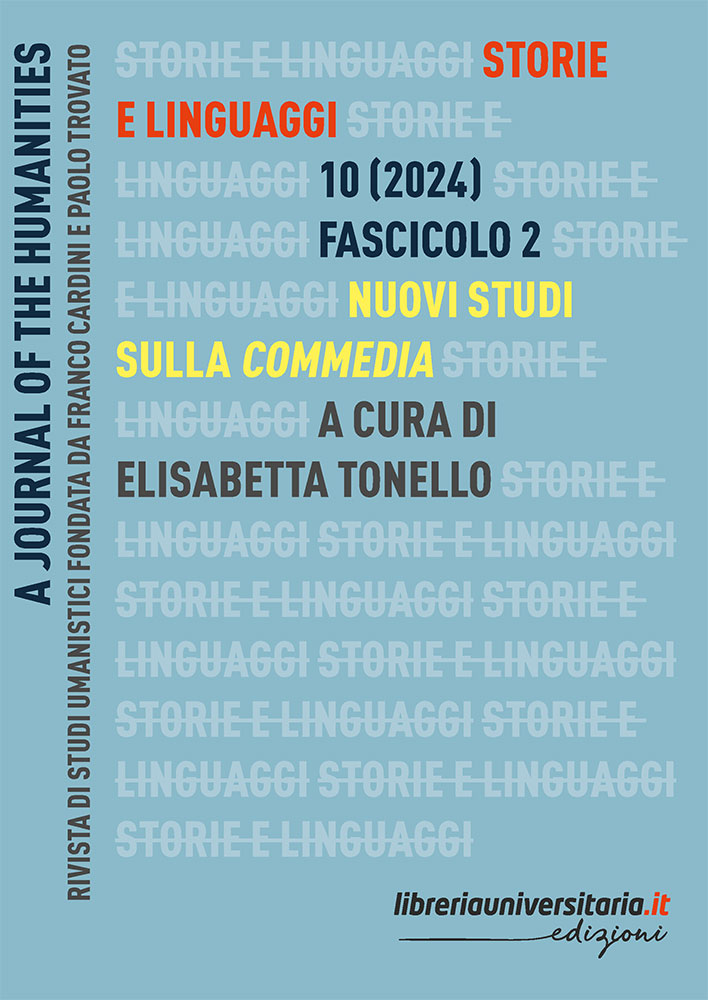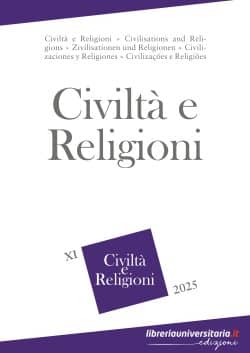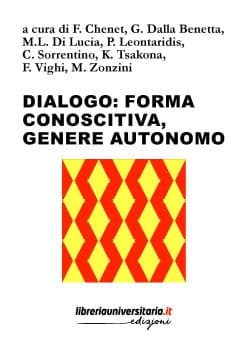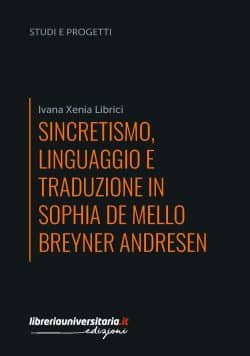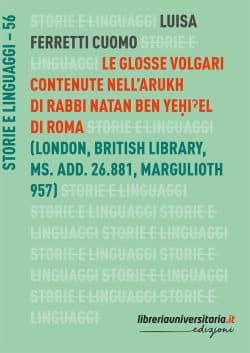Indice
Semiosis in Dante’s Purgatorio and Paradiso
Abstract (ita)
Nell’articolo si propone l’analisi dei canti xxviii-xxxiii del Purgatorio e dei canti xviii-xix, xxvii- xxviii del Paradiso in relazione al ‘modo di significare’ dantesco che si evolve con l’evolversi della narrazione. Dal Paradiso terrestre in poi e per tutto il Paradiso, si può parlare di “semiosi mobile”, o meglio ancora “semiosi caleidoscopica”: l’evidenza corporale, oltre a esprimere direttamente il senso simbolico delle creature materiali, procedendo nel percorso narrativo esprime sensi simbolici diversi, o separa sensi simbolici uniti. A partire dal cielo di Giove, assistiamo poi a un tentativo di superare i vincoli del processo sintagmatico inerente al discorso, per realizzare un’immagine paradigmatica, in cui si fondono in un simbolo complesso diversi significati.
Abstract (eng)
In this study the analysis of xxviii-xxxiii cantos in Purgatory and of xviii-xix, xxvii-xxviii cantos in Paradise is proposed in order to demonstrate the evolution of Dante’s ‘way to signify’ within the evolution of the narration itself. Starting from Paradiso Terrestre till the end of Paradiso we assist to what we call “mobile semiosis”, or even better “kaleidoscopic semiosis”: the corporeal evidence may express one to one the symbolic meaning of physical realities; but in the progress of narrative pathway it may express different symbolic meanings which grow one on the other, or separate united symbolic meanings in different narrative entities. Starting from Jupiter heaven, the narrator tries to overcome the restraints of syntagmatic process inherent to discourse, in order to achieve a paradigmatic picture, where different meanings merge.
Tra i cantor del cielo artista. Dante and the Semantics of Creation in the Comedy of Dante Alighieri
Abstract (ita)
Il contributo offre spunti per definire l’origine della parola ‘artista’ e sulle sue occorrenze nella Commedia (Par. xiii, v. 77; Par. xvi, v. 51; Par. xviii, v. 51; Par. xxx, v. 33), fondamentali sia perché, nonostante esista una (unica) precedente attestazione in un sonetto di Cino da Pistoia (Qua’ son le cose vostre ch’io vi tolgo, v. 9), il termine è stato impiegato per la prima volta nella sua attuale accezione nel poema dantesco; sia perché, grazie all’influenza del dettato di Dante sulle opere di autori successivi quali Michelangelo Buonarroti, la parola si è consolidata nel vocabolario italiano definendo una specifica categoria intellettuale e filosofica.
Abstract (eng)
The contribution presents the possible origin of the word ‘artist’ and its occurrences in the Commedia (Par. xiii, v. 77; Par. xvi, v. 51; Par. xviii, v. 51; Par. xxx, v. 33), which are fundamental both because, despite the fact that there is a (only) previous attestation in a sonnet by Cino da Pistoia (Qua’ son le cose vostre ch’io vi tolgo, v. 9), the term was employed for the first time in its current meaning in Dante’s poem; and also because, thanks to the influence of Dante’s dictation on the works of later authors such as Michelangelo Buonarroti, the word became consolidated in the Italian vocabulary defining a specific intellectual and philosophical category.
A note on Paradiso VII, 90 («Sanza passar per un di questi guadi»)
Abstract (ita)
In questo saggio l’autrice riflette sull’uso della parola guado, una immagine metaforica che racchiude la raffinata argomentazione teologica dantesca su una questione di particolare rilevanza nella cristianità: la morte di Gesù Cristo come necessaria soddisfazione imposta all’uomo, in luogo della concessione gratuita del perdono ad opera della misericordia divina. La ricerca delle occorrenze nei testi latini classici e altomedievali chiarisce l’esatta accezione assunta dal termine nei versi della Commedia.
Abstract (eng)
In this essay, the author reflects on the use of the word guado, a metaphorical image that condenses Dante’s refined theological argument on a relevant question in Christianity: the death of Jesus Christ as a necessary satisfaction imposed on man, instead of the granting of forgiveness by divine mercy. The search of occurrences in classical and early medieval Latin texts clarifies the exact meaning assumed by the term in the verses of the Divine Comedy.
Idola and philology. More on the family a (Mart Triv) and the subscriptio by Forese Donati
Abstract (ita)
La famiglia a (Mart Triv) potrebbe apparire come un idolum tribus negli studi sulla tradizione della Commedia: sfruttatissima per la vetustà e per la patina fiorentina dei suoi testimoni e considerata fondamentale anche nella recentissima edizione critica di Giorgio Inglese, è stata però degradata a sottogruppo periferico e di basso rango nello stemma complessivo dei manoscritti del poema già nel 2013 dagli studi che ho condotto e pubblicato in Nuove prospettive sulla tradizione della Commedia. II serie. Questo intervento mira ad approfondire i rapporti tra i membri della famiglia e riflettere sulla natura dell’insolito prodotto Mart e, più specificamente, sulla conservazione della subscriptio di Forese.
Abstract (eng)
The Mart Triv family might appear as an idolum tribus in the studies on the tradition of the Commedia: extensively exploited, due to its antiquity and the Florentine patina of its witnesses, and considered fundamental even in the very recent critical edition by Giorgio Inglese. However, it was downgraded to a peripheral and low-ranking subgroup within the overall stemma of the poem’s manuscripts as early as 2013 by the studies I conducted and published in Nuove prospettive sulla tradizione della Commedia. II serie. This article aims to deepen the understanding of the relationships among the family members and reflect on the nature of the unusual Mart product and, more specifically, on the preservation of Forese’s subscriptio.
Further reflections on the mad family (Md Rb and related manuscripts)
Abstract (ita)
L’intervento propone un supplemento di indagine sulla famiglia mad, condotto sulla base dei dati emersi dalla nuova edizione critica della Commedia di Paolo Trovato ed Elisabetta Tonello e, nello specifico, dal lavoro in corso sulle altre due cantiche. In particolare ci si concentrerà sui manoscritti che esibiscono rapporti di contaminazione con mad: Trev e Ott. Lat. 1523.
Abstract (eng)
The paper proposes an additional investigation of the mad family, based on the data derived from the new critical edition of the Commedia by Paolo Trovato and Elisabetta Tonello and, specifically, from the ongoing work on the other two canticles. In particular, the focus will be on manuscripts that exhibit instances of contamination with mad: Trev and Ott. Lat. 1523.
Gleanings from the critical apparatus of Dante’s Purgatorio
Abstract (ita)
Il saggio si sofferma su alcuni casi interessanti tratti dai dati di apparato del Purgatorio. Oltre al dato filologico, che a questa altezza stemmatica spesso deve prescindere dai loci critici (non più utilizzabili perché il testimoniale è quasi sempre in accordo in quei punti testuali), è stato necessario servirsi di considerazioni stilistiche e del criterio dell’usus scribendi, molto utile per cogliere la serialità dei procedimenti compositivi di Dante. Nei casi di diffrazione, come accade in un luogo qui discusso, l’eziologia dell’errore viene ricostruita, portando considerazioni a sostegno di diverse ipotesi e illustrando i criteri che hanno condotto alla decisione finale.
Abstract (eng)
The essay focuses on some interesting cases from the apparatus of the Purgatorio. In addition to the philological data, which at the highest ranks of the stemma disregard the loci critici (useless because the witnesses very often agree in these points of the text), it has been necessary to express stylistic considerations and enact the criterion of the usus scribendi, which is very useful to realize the seriality of Dante’s compositional procedures. In cases of diffraction, as shown in one case here discussed, the etiology of the error is reconstructed, formulating considerations to support different hypotheses and illustrating the criteria that led to the final decision.
New proposals for the provençal verses of the Commedia
Abstract (ita)
L’articolo presenta una nuova proposta di edizione delle terzine provenzali della Commedia, basandosi sul nuovo testimoniale dell’edizione critica Tonello-Trovato.
Abstract (eng)
The article proposes a new edition of the Provençal verses of the Comedy, based on the witnesses chosen in the critical edition of Tonello and Trovato.
New glances towards the Paradiso: I 141 and III 28
Abstract (ita)
Il saggio prende in esame due passaggi complessi del Paradiso
(I 141 e III 28) nei quali non è possibile un’applicazione meccanica dello stemma. In entrambi i casi, le varianti espresse dalla tradizione vengono discusse sulla base di criteri culturali e linguistici con l’obiettivo di giustificare la lezione da proporre a testo.
Abstract (eng)
The essay examines two complex passages in Paradiso (I 141 and III 28) in which a mechanical application of the stemma is not possible. In both cases, the variants expressed by tradition are discussed on the basis of cultural and linguistic criteria with the aim of justifying the reading to be proposed in the text.
Sciogliere il verso: some notes on the prosodic-rhythmic structure of the hendecasyllable in the Commedia
Abstract (ita)
La ricostruzione testuale di testi poetici dei primi secoli privi di originali rischia di applicare norme prosodiche consolidatesi soltanto nel corso della tradizione. A partire dalle recenti acquisizioni (Facini 2017) circa l’endecasillabo dei poeti della corte federiciani e dalla più recente edizione dell’Inferno (Tonello-Trovato 2022), il contributo propone la discussione di alcuni aspetti prosodici (media accentuale, ictus ribattuti e configurazioni prosodiche anomale) tramite la scansione di un campione di dodici canti della prima cantica della Commedia.
Abstract (eng)
The textual reconstruction of early centuries’ poetic texts lacking original manuscripts risks applying prosodic norms that only consolidated over the course of tradition. Building on recent findings (Facini 2017) regarding the hendecasyllable of poets at the court of Frederick II and the latest edition of the Inferno (Tonello-Trovato 2022), this study examines certain prosodic aspects (average accentuation, repeated ictus, and anomalous prosodic configurations) through the scanning of a sample of twelve cantos from the first cantica of the Commedia.
Report on a new 14yh-century fragment of Dante’s Commedia in Buenos Aires
Abstract (ita)
Il saggio dà notizia della scoperta di un frammento della Commedia nel catalogo del Tesoro della Biblioteca del Museo Nacional de Arte Decorativo di Buenos Aires. Nonostante fosse stato esposto tra 1937 e 1992, il frammento era passato finora inosservato e non aveva ricevuto dunque le debite attenzione dei critici. Si fornirà una breve descrizione codicologica, paleografica e linguistica del testimone frammentario, che porterebbe a datarlo alla seconda metà del Trecento. Presenterò inoltre alcuni dati a sostegno dell’ipotesi di un legame tra questo e un altro frammento conservato alla Biblioteca Medicea Laurenziana, e un terzo ancora, conservato alla Biblioteca dell’Archivio di Stato di Lucca: ipotizzo che i tre frammenti fossero parte di uno stesso codice.
Abstract (eng)
This article presents the news of a recently discovered fragment of the Comedy in the Catalogue of the Library of the Museo Nacional de Arte Decorativo in Buenos Aires. Despite being exhibited between 1937 and 1992, the fragment has remained unnoticed and has therefore not received due attention from critics. I will proceed with a brief codicological, palaeographical and linguistic description of the fragment that would lead one to date it in the second half of the 14th century. I will also present some data supporting the hypothesis of a link between this and another fragment preserved in the Biblioteca Medicea Laurenziana and a third one, preserved in the Biblioteca dell’Archivio di Stato di Lucca: I will sustain that the three fragments were part of the same codex.
Marginalia from the Purgatorio in the Laurenziano codex Pluteo 40.7
Abstract (ita)
Il codice Laur. Plut. 40. 7 presenta un sistema irrelato di glosse variamente ascrivibili a commenti già noti, come l’Anonimo Lombardo, Iacomo della Lana e l’Ottimo, nonché, concentrate nelle carte del Purgatorio, un manipolo di note non riconducibili a nessun esempio esegetico pregresso e che dunque costituiscono un ulteriore e inedito tassello della ricezione del poema. Di queste ultime si darà conto nel presente contributo con una trascrizione integrale e uno studio sulle possibili fonti compulsate dall’anonimo commentatore.
Abstract (eng)
The ms. Laur. Plut. 40. 7 features an unrelated system of glosses variously attributable to already known commentaries, such as the Anonimo Lombardo, Iacomo della Lana, and the Ottimo, as well as a handful of notes, concentrated in the pages of the Purgatorio, which cannot be traced back to any previous exegetical example and thus constitute an additional and unpublished piece of the poem’s reception. This article will provide a full transcription and a study on the possible sources consulted by the anonymous commentator for these latter glosses.
New investigations into the language and text of the Florio ms.: preliminary examinations
Abstract (ita)
Il codice Florio è uno dei testimoni più affidabili della tradizione settentrionale della Commedia dantesca. Tuttavia se ne conosce solo parzialmente l’aspetto testuale e linguistico. Lo studio più approfondito disponibile è quello di Federico Sanguineti, Sui manoscritti Estense it. 474, Florio, Urbinati lat. 365 e 366, che si occupa di alcune lezioni a confronto tra quattro testimoni di patina settentrionale.
Dall’apparato della nuova edizione dell’Inferno curata da Tonello-Trovato, e dagli spogli operati su Purgatorio e Paradiso, appare che entro la famiglia β, pure assai ben definita e coerente, il codice Florio presenti talora lectiones singulares di qualche interesse. Questo studio intende fornire alcuni primi dati che emergono dalle schede, con l’obiettivo di razionalizzare la posizione stemmatica del testimone entro la famiglia β.
Abstract (eng)
The Florio Ms. is one of the most reliable witnesses of the northern tradition of Dante’s Commedia. However, only a part of its text and language aspect is known. The most thorough study available is the one by Federico Sanguineti, Sui manoscritti Estense it. 474, Florio, Urbinati lat. 365 e 366, concerning some lessons comparing four witnesses that show a patina of northern vernacular varieties. From the new edition of the Inferno edited by Tonello-Trovato, and from the studies carried out on Purgatorio and Paradiso, it emerges that inside the β family, although very well defined and coherent, the Florio Ms. sometimes presents interesting lectiones singulares. This study aims to provide some initial data emerging from the collations, with the aim of rationalising the stemmatic position of the witness within the β family.
The Dantean glosses of S. Pantaleo 8: paleographic analysis, edition, and textual problems
Abstract (ita)
Il contributo approfondisce nel dettaglio lo spinoso problema delle glosse del ms. S. Pantaleo 8 della Biblioteca Nazionale Centrale di Roma, complesso testimone della Commedia. Vengono individuate 14 mani di diversi annotatori, dei quali uno si occupa anche di un apparato di glosse al volgarizzamento dell’Epistola VII di Dante, e un altro è anche uno dei principali copisti del testo del poema. Nella prima parte si offre una dettagliata descrizione codicologica e paleografica con particolare attenzione alle grafie delle chiose; nella seconda si offre da un lato l’edizione di quelle alla Commedia e dall’altro un primo sondaggio filologico su quelle all’Epistola VII.
Abstract (eng)
The contribution delves into the intricate issue of the glosses in manuscript S. Pantaleo 8 of the National Central Library of Rome, a complex witness of the Commedia. Fourteen different annotators’ hands are identified, with one also responsible for an apparatus of glosses on the vernacularization of Dante’s Epistola VII, and another being one of the main copyists of the poem’s text. The first part offers a detailed codicological and paleographic description, paying particular attention to the annotators’ hands; the second part provides both an edition of the glosses on the Commedia and a preliminary philological investigation of those on Epistola VII.

